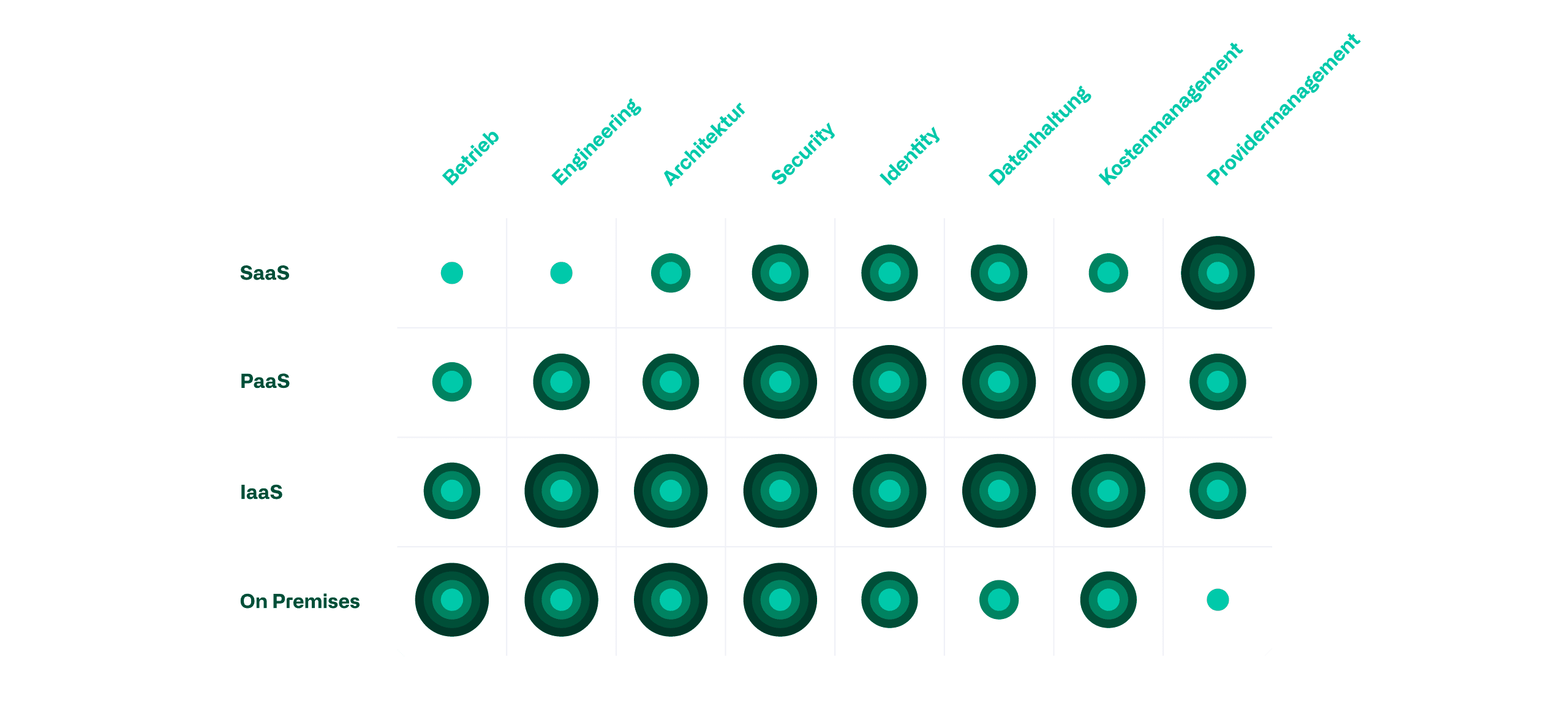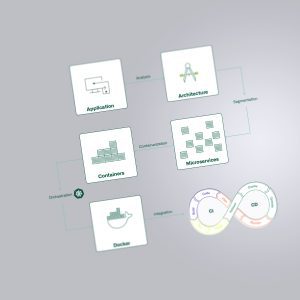Blog
Cloud service models - which skills are needed and to what extent?
The question of existing and required skills should also be considered in a cloud strategy.
The transformation of an application to a cloud provider not only requires new know-how, but also always requires additional resources - relief only comes after consistent dismantling of existing infrastructures.
What does the Cloud Journey mean for internal IT skills?
Cloud computing, or "the cloud" for short, as it is colloquially known today, is currently experiencing immense hype. Great promises are being made from all sides, expectations are being stoked, but concerns are also being expressed and caution is being urged. This is a typical situation that occurs time and again with disruptive technologies. For IT managers, this means that, together with their business managers, they have to deal with the new possibilities, risks and consequences and define their own path to the cloud.
One facet of the cloud journey which is underestimated, especially at the beginning, and often receives too little attention, is the question: What skills and what know-how does a company need if it produces its IT services mainly with cloud computing services? It is important not to be blinded by the widespread marketing promise, which suggests that cloud services can simply be consumed without any effort on your part.
In the real world, IT applications are rarely isolated systems, but almost always part of a network with interfaces to other applications and peripheral systems. From the user's point of view, the user experience is expected to be as uniform as possible. The integration of the various applications into a meaningful IT landscape is special for each company and individually adapted and optimized for the respective requirements.
The range of service models in use is multifaceted and can be roughly divided into the following generally known categories:
- Software as a Service (SaaS)
- Platform as a Service (PaaS)
- Infrastructure as a Service (IaaS)
- On Premises
The trick now is to develop and operate an IT landscape that is as uniform, consistent, and cost-optimized as possible from all the available options. As already mentioned, attention must be paid to the aspect of the skills and know-how required for each service model.
Know-how, skills and service models
Depending on the service model, the required skills shift from highly technical to more service-oriented organizational know-how. In addition to the shift in skills, however, the effort required to perform the activities must also be taken into account. In the following graphic, we have compared relevant IT skills with the various service models. The evaluation is based on the required depth of knowledge, the complexity of the contexts, and the time and resources required.

Operation
In-house required operating skills are reduced linearly with the reduction of the vertical integration of the service models, as more and more infrastructure components are outsourced to the provider. Regular maintenance of hardware, operating systems and databases is thus gradually eliminated as the service model increases.
Engineering
A similar picture emerges with regard to engineering. However, the gradation of the required skills is significantly steeper than in operation. If new services are created or existing ones are further developed, the effort required for PaaS or IaaS solutions is significantly higher than for SaaS, since significantly more interfaces and compatibilities have to be taken into account.
Architecture
In the area of architecture, internal skills can be saved primarily by using SaaS services. The conceptual effort required to integrate IaaS or PaaS services into the IT landscape is only partially less than designing new on-prem services. Here, too, issues such as compatibility and interfaces to existing services play a greater role.
Security
Security in the IT landscape is equally relevant in all service models. However, the focus of security is shifting vertically from technical skills, such as hardening the system, to organizational efforts, such as checking data locations. Internal efforts can therefore only be reduced by purchasing SaaS services, since all work relating to the underlying infrastructure is taken over by the provider.
Identity
In the area of identity management, the demands on the internally required skills increase when services are outsourced from on-prem to an "as-a-service" model until all underlying infrastructure components are left to the provider. PaaS and IaaS thus offer the disadvantages of on-prem and SaaS in identity management without taking over their advantages. Additional identity management comes into play, which must be integrated into the existing system or managed as a supplement. In addition to access to the application, authorizations must also be set for the underlying infrastructure components.
Data management
The relevant know-how for correct data storage differs greatly depending on the service model used. While a SaaS solution requires more thought in advance regarding data location and access, an on-prem approach requires more technical skills in the area of backup and availability. IaaS and PaaS services have higher requirements here, as the know-how for both topics must be readily available.
Cost management
An overview of the costs is required in all service models. However, the effort and knowledge required to create such an overview differs again between the service models. PaaS and SaaS services have particularly high requirements. Services such as an SQL database can be obtained in different functionalities, availability levels, scaling levels and sizes. In addition to this technical diversity, further distinctions can also be made in the billing models. The operating costs can thus quickly rise to an unexpected level and, depending on the configuration, only become transparently apparent at the end of the month. SaaS services with their user or device licenses are much simpler. Since on-prem is not based on the pay-as-you-go principle, it is much more complex to determine the costs of individual components. However, errors in the calculation do not result in an unexpectedly high bill.
Provider Management
Provider management involves the art of being able to react quickly to changes to a related service or application by the provider in order to be able to counteract possible negative effects in a timely manner. The more control is relinquished over one's own infrastructure, the more effort must be expended in this regard. In a worst-case scenario, for example, an application on an IaaS VM is migrated much faster than the same application in a SaaS model. Backup, disaster recovery or even availability are increasingly implemented only contractually and not via configurations of the engineer as the vertical integration decreases.
Conclusion
Under the influence of the increasing use of cloud computing, an IT landscape is based on an ever greater variety of service models. In principle, it can be assumed that the more diverse the service models used, the greater the breadth of expertise required.
Mastering these different service models therefore does not necessarily require new skills, but often adaptations of existing know-how. Although, for example, the operating effort tends to decrease with the migration from on-premises to the cloud, a company should still deal with new topics such as IaC or DevOps.

Blog
For supplementary information on CI/CD and IaC, please see our dedicated blog post
CI/CD and IaC
However, new tasks generated by a migration and the associated changes in the required know-how are to be understood as additional effort in all cases. This is the case until the existing environment is actively dismantled. The choice of service model has no influence here.
The cloud strategy must therefore carefully determine which service models are to be used in order to deduce the extent to which the skills available today will be needed in the future. Each company must therefore analyze in detail which know-how should be newly built up, which should no longer be maintained, and which should be brought in from outside if necessary.




